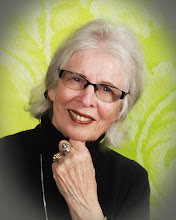Dear A. B. Curtiss
I am sure that you receive thousands of phone calls and
emails. I can only hope that we will connect. I have been fighting
depression for over 30 years. I was a positive, active person in my teens
and early 20's. When my late husband went into the hospital for the
second time due to his alcoholism--I started having panic attacks. At one
time I was an excellent runner--and that was my "go to" place to
regain calm and focus. Unfortunately, I had been in a serious car accident and
could no longer run. Yadayada. But, you get the picture of the beginning
of a downward spiral.
At that time I was put on antidepressants/antianxiety meds.
which did very little to alleviate the problem--in fact I became quite
dependent on the Lorazepam. I eventually lost my career as a teacher of
young children and literally "hit bottom" last January.
I finally found a doctor to help me get off of the
psychotropic drugs. I used the techniques describes in your book--but
still experienced suicidal thoughts--which I fought with Brainswitch and
walking.
I am finally off of all drugs--and thought I was
making progress. I walk (a lot!) care for an elderly man and help with
care of our grandson. I feel a bit "foggy" on a lot of days but still
hope to become more functional and mentally sharp. Thought I was making
progress until the days began to get dark again. It literally feels like
a windowshade in my brain has been pulled down. I have read about SAD and
use full spectrum lights but this is the first time in years I have faced the
dark days of winter without drugs.
My question is very simple--Does Brainswitch work for SAD?
Is there anything in addition you would suggest? Thank you so much
for letting people know there's hope.
Mahalo Nui Loa (thank you from the heart)
S
Dear S
Yes, Brainswitch
does work for SAD. SAD is just like any other downer shift of thinking that
antecedes downer shift of feeling. The earlier you can catch yourself falling,
the easier it is to distract yourself and move in another, more positive,
direction. In addition to mere distraction from SAD, you can always do
something to cozy up your home with a crackling fire, or colors that are
bright such as reds and yellows. or comfy quilts to snuggle up in. We are
sensitive to our environment and we can also do much to change our immediate
environs.
The trick is to
invest these things we have used to cozy up our environment with the idea of
feeling cozy and safe and identify with and introject them. And
withdraw and distract ourself from investing the dark day with ideas
that we are lost, abandoned and unsafe. SAD happens because we attribute
to the dark day things that are not true about them and then we react to the
things we have attributed to the dark day, not to what it really is, but what
we have habitually attritubed to it.
SAD happens when we
start to identify with and introject the immense grey skies, incessant rain,
dreary sidewalks and roadways as if they are us. They are not us. We can make a
small space of our own within this darkening world and learn to bring to
it our own sense of comfort and coziness. When we go out into the dark
day, we can learn to enjoy it more by reminding ourselves that it isn't us and
it isn't endless and there is no rational reason to attribute those things
to it and then react to our own attribution. We can begin to think of the
dark day as a contrast to what we have waiting for us, as a measure of comfort
when we go into a brighly lit store, or a movie, or our business or our home
where cozy things welcome us. Seeing both our comfy nearby environment and the
dark day as contrasts but not that one is hurting us, we can more easily move
through the dark day.
SAD is faulty
thinking just like other forms of depression. When we drop the thinking and
replace it with different and more productive thinking, the SADness or
depression lifts, and we can move forward with our day.
If you want to you
could get yourself a talisman. Some object, piece of jewelry, that you always
have with you and whenever you feel you are over-identifying with the dark of
the day you could grab on that talisman and remind yourself that you can choose
other thinking, other things to identify with.
Hope this helps. A.
B. Curtiss
Dear A. B. Curtiss
I asked earlier about dealing with depression in the winter.
Same ? --for the "big stuff"
cancer
pain
loved ones dying
Mahalo Nui Loa
Dear S,
Yes, we all must
mourn our losses but we must not let that appropriate mourning turn into
the chemical imbalance of depression. We must be able to accept the pain and
hurt of loss as all human beings are, sooner or later, forced to do. We all
must simply surrender to the pain of loss, and let the pain make its way
through us. Like the old saying, “Say yes to the pain.” Then, after a suitable
time, it is our duty to pick ourselves
up and gently move ourselves forward with our day. We are never alone in our
sorrow over some loss. We never know what great sorrow fills the hearts of some
stranger walking next to us down the street.
Here is a quote
that I find helpful for this:
The English
theologian Richard Cecil (1748-1777) says: “Duties are ours, events are God’s.
This removes an infinite burden from the shoulders of a miserable, tempted,
dying creature. On this consideration only can he securely lay down his head
and close his eyes.”
A. B. Curtiss


No comments:
Post a Comment